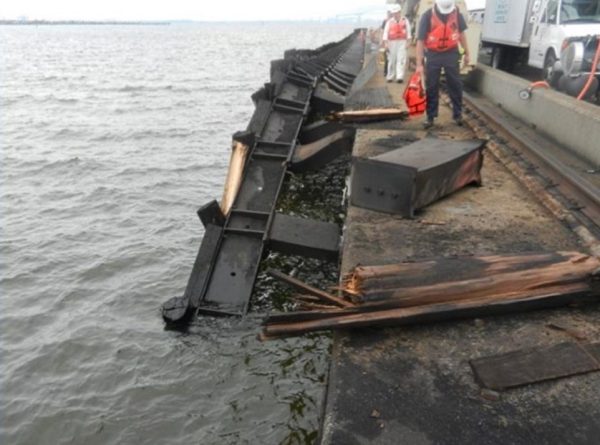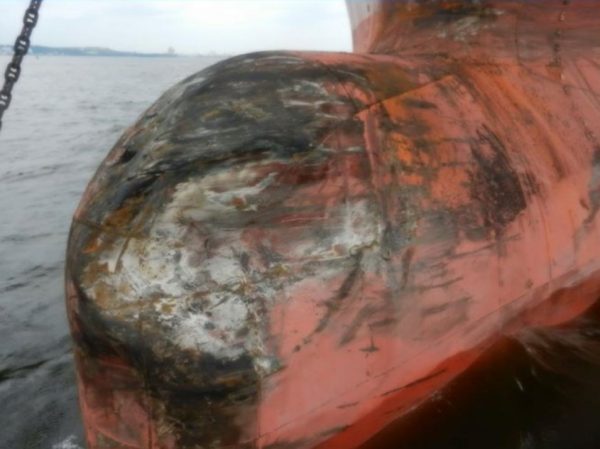In its most recent “Good Catch” – a series where the American Club provides valuable lessons learned from incidents – the Club refers to an incident where a vessel allided with a nearby dock causing damage to the vessel’s bow and to the dock structure.
The incident
A break bulk carrier picked up the pilot prior to entering port. The Master-pilot exchange was held. They discussed the vessel’s handling, condition of the
propulsion system, the weather, expected traffic, and the planned use of two docking tugs. In addition to the Master and the pilot, the 2nd Mate and a helmsman were on watch on the bridge.
The 2nd Mate had propulsion control and was also monitoring the vessel’s radar and position. The pilot was giving helm and engine commands as he brought the vessel past the breakwaters and started up the river. At that point, the vessel was traveling at a speed of 7 knots. As the vessel approached a substantial turn in the river, the pilot ordered the rudder to 25o to starboard.
He quickly realized that was insufficient when he saw that the vessel’s rate of turn was less than he thought it would be. He then quickly ordered “right full rudder” and ordered the engine “back full.” Although the rudder and the engine responded quickly, the vessel allided with a nearby dock causing damage to the vessel’s bow and to the dock structure.
In his statement after the incident, the Master indicated that he thought the pilot was proceeding too fast but did not say anything. He had deferred to the pilot’s judgment because of the pilot’s familiarity with the port and because it was the Master’s first visit to the port. The Master also said that he handed the pilot the vessel’s pilot card but did not recall if the pilot actually reviewed it.

Probable Cause
According to the American Club, tests of the steering system indicated that the system was functioning normally and that there were no delay responses in the system.
A review of the information in the voyage data recorder showed that the response of both the helmsman and 2nd Mate to the commands from the pilot were correct and without appreciable delay.
When interviewed, the 2nd Mate also indicated that he felt the vessel was proceeding faster than was prudent. He did not feel it was his place to say anything since the pilot knew the port and because he saw that the Master was monitoring the pilot’s actions closely.

Lessons learned
The American Club makes the following recommendations in order to prevent similar incidents from happening in the future:
- A good Master-pilot exchange is critically important and should never be treated as a formality.
- The planned route and vessel speed should be discussed during the Master-pilot exchange including challenging navigation conditions and locations.
- The Master should trust his/her judgement and should immediately raise any concerns related to pilot actions or inactions.
- Good bridge resource management includes creating the atmosphere where everyone on the bridge, including junior crew members, should feel empowered to speak up if they see an error or believe something in not safe.






























































